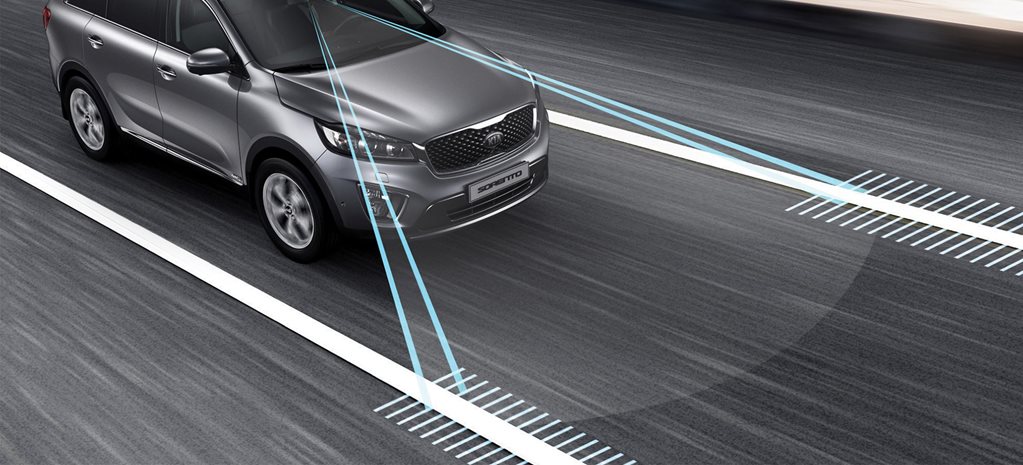
So many pieces of innovative and improved technology are making their way into our vehicles, with these systems functioning to make drivers feel safer and less stressed when behind the wheel. Along with Grange, which stocks the state-of-the-art Aston Martin Vantage, we’ve looked at five pieces of in-car technology which are just being released and the benefits which they can provide to motorists who start using them…
1) The Blind spot information system (BLIS)
Drive a car which uses the blind spot information system (BLIS) and you’ll be kept updated about any vehicles which have entered into your blind spot whenever you go to change lanes. When a vehicle enters your blind spot zone, the BLIS system will alert you. The detection area is on both sides of your vehicle, extending rearward from the exterior mirrors to approximately 10 feet (3 meters) beyond the bumper. The system alerts you via a small light on your side wing mirrors – when there is a vehicle in your blind spot zone, the light will illuminate. When your blind spot zone is clear, the light will switch off.
2) Intelligent speed assist (ISA)
With intelligent speed assist (ISA) technology, you’ll receive both audio and visual alerts should you stray above the speed limit. By using GPS, the system is able to detect the vehicle location and reference this with a digital road map that is programmed with speed limit information for each road. The system can be used as an active speed limiter whereby it can take control of the vehicle and reduce the speed when travelling above the speed limit. It does this by reducing the throttle signal. Additionally, the system is also fitted with a speed limiting function that increases the pressure on the accelerator when you exceed the speed limit, so that it is harder to accelerate and break the speed limit.
3) The weather adaptation system from Jaguar Land Rover
It has been revealed by Jaguar Land Rover that its new vehicles are to be fitted with advanced weather adaption systems. The system allows cars to autonomously adapt to weather changes and situations to make adjustments to drivetrain, suspension, traction control and climate control for optimum efficient driving.
Intelligent weather adaption systems are sure to be appreciated by people who drive Range Rover and Land Rover vehicles on a variety of terrain in particular. The technology is said to be able to connect to present and future weather data via telematics and GPS to sensibly adapt both inside the cabin and around the exterior. One feature suggests that the system will automatically close your vehicle windows if it senses that rain is forecast. Onboard rain- and terrain-sensing mechanisms will be used to control the temperature, pressure and humidity inside the cabin, whilst interior and exterior lighting will be altered depending on the circumstances.
Advanced weather adaption systems from Jaguar Land Rover are expected to be released in 2020.
4) Lane departure warning systems
Also deemed lane-keeping systems, you can now find lane departure warning systems on many vehicles. These systems keep you within your lane when driving on the motorway. When motorway driving, it’s vital that you stay firmly in your lane, unless you are overtaking. This system alerts you with a vibration on the steering wheel if your vehicle is unintentionally edging out of its lane – and in circumstances when the vehicle thinks you are reacting too slow, the vehicle will take control and provide steering torque to divert you back into the safe space on your lane. This is a safety feature to prevent drivers from veering out of their lane on motorways and dual carriageways where drivers around them are driving at high speeds.
5) The ECO-pedal system
Drivers were introduced to a one-pedal driving system with the launch of the new Nissan LEAF. The electric automobile not only has double the mileage range of its previous model equivalents, but the one-pedal driving system allows for the accelerator pedal to be transformed into a multifunctioning e-pedal at a touch. The e-pedal functions as a start, stop, accelerate and breaking pedal when activated. Suitable for 90% of urban driving, the system means that the car will slow to a halt by itself with the ability to hold itself on an incline without the need of the brake pedal.
When put alongside previous models manufactured by Nissan, the brand’s new system grants drivers with more efficiency benefits. Nicknamed the ECO-pedal system, the pedal controls the speed of acceleration to prevent revving up the engine. The level of fuel-efficient driving is displayed through a colour and flashing Eco-P lamp. According to Nissan, studies have proven that effective eco-driving with the ECO-pedal can contribute to an improved fuel efficiency by 5-10%.
